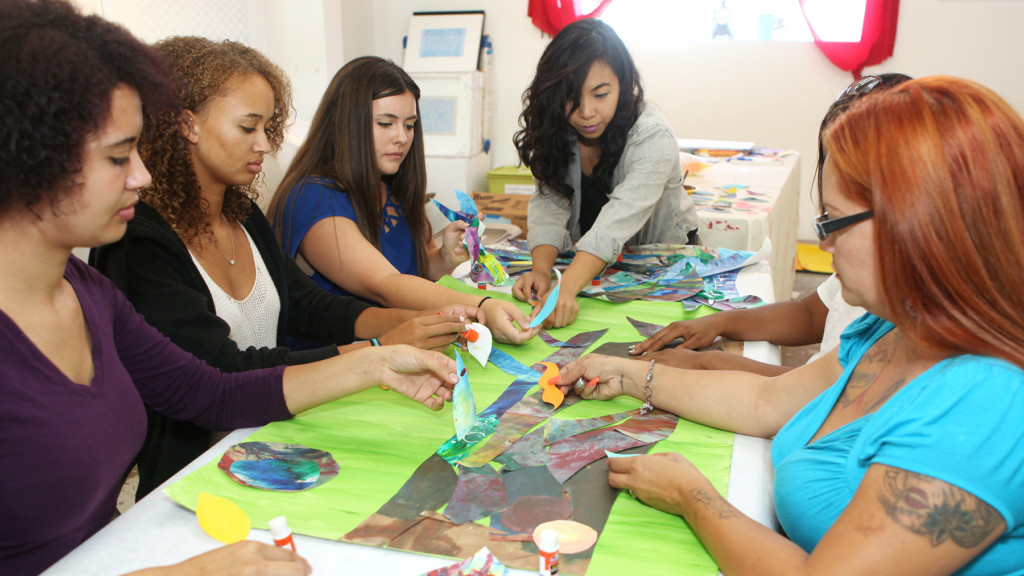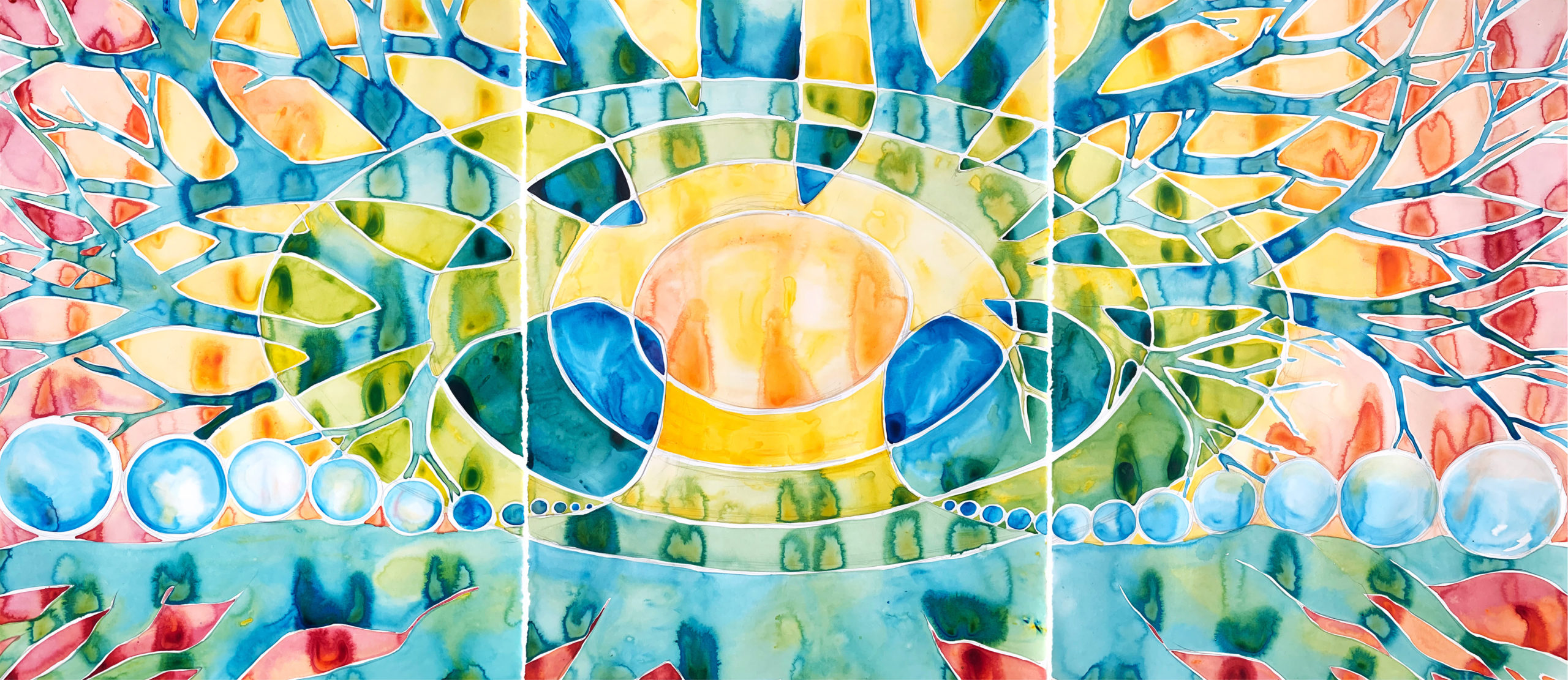One way to address the trauma of loss and grief is through art. Losing someone to AIDS is often a horrible death, or it used to be. I lost my Uncle Mike in 1996, he was only 49 years old. Ever since I have been honoring him each year through creating my Dia de los Muertos altar and through my work.
I worked with people living with HIV/AIDS for 12 years with the CARE Program & Clinics at St. Mary Medical Center in Long Beach. I provided individual counseling and group counseling, including therapeutic arts. Coming to the domestic violence field, I was instantly curious about AWBW and happy to see art was so prevalent in the field, helping survivors understand their experience through art.
Losing clients on a regular basis meant we needed to find our own way to heal— art and ceremony helped me in my healing journey.
I supported efforts in the Long Beach Community to raise awareness about HIV/AIDS transmission and reducing risk around methamphetamine use. At the CARE Programs & Clinics I organized a community Dia de los Muertos altar project to assist my colleagues with our collective grief over the loss of clients.
I find the ceremony of building altars to honor our loved ones extremely healing. Our western culture does not allow for proper grieving of the loss of loved ones, let alone any acknowledgment of how it feels to lose clients — not family, not friends, though still people we have cared for and who have impacted our lives.
Along with art being a powerful resource for my clients and colleagues, as a practitioner in the HIV/AIDS field, art was an essential healing tool for me as well. Losing clients on a regular basis to AIDS and more often to addiction, with no structure to process the losses, meant we needed to find our own way to heal — art and ceremony helped me in my healing journey, as it continues to do to this day.
For example, in 2005 I lost six clients, several of whom I had been working with for a while, all of whom shared their intimate stories with me. Each impacted me in a different way. Of the six, only 2 died due to AIDS, the others to addiction and suicide. In the image above, I wove together images of death, represented by the calaveras/skulls, and hope, represented by the AIDS ribbon and words, including the CARES motto: AIDS is a four letter word, so are HOPE, LOVE & CARE
Fortunately, the queer community embraced me as a practitioner in my early social work career and I met many artists who used their talents to send a message or figure out their own big feelings caused by their diagnosis – being faced with their own mortality a lot sooner than most of us.
One of the artists I met along the way was Michael Dominguez (RIP) who inspired me to create public health campaigns using art. A client I had been counseling commissioned Michael to create an art piece for me, a personal gift honoring my work in the queer community, trying to help addicts living with HIV actually live beyond their addiction enough to get treatment for HIV. It was so impactful to be recognized in such a personal way, with art by my favorite client commissioned by one of my more complicated clients! I was grateful Michael allowed me to use his artwork in a campaign to raise awareness about meth use in the queer community of Long Beach. In the 2000’s we saw more deaths related to methamphetamine use than to the complications related to HIV/AIDS itself.
A good friend of mine, Scott Overby (RIP), also supported my efforts by gifting me an art piece that was also used in a public health campaign, creating postcards with messages, encouraging those struggling with drug use, living with HIV, to reach out.
The goal of most public health campaigns is to connect people to resources, as we did at CARE, and as art does. I merged my love of art and passion for public health in creating messages and in hopes people would pick it up and actually read it. Art that sends a message – that is socially engaged art, pure and simple.
This World AIDS Day I honor all those who have lost their battle to AIDS, all of those that have lost a loved one, and all those fighting the good fight to support our community members living with HIV — and most especially my Uncle Mike, Michael Dominguez, Scotty and Connie Norman.
I invite you to honor this day and those you know who have been impacted by HIV/AIDS by engaging your creativity.
Elizabeth Eastlund, MSW/LCSW
Founding Member of the Los Angeles Domestic Violence Homeless Services Coalition
Former Executive Director of Rainbow Services
Board Member of the California Partnership to End DV
Windows Facilitator
San Pedro, California
Want to help people honor their grief though art?
Attend a Training
A Window Between Worlds (AWBW) supports hundreds of direct service organizations across the country to incorporate creative expression into their work with trauma survivors. With this blog we uplift the voices of our art workshop facilitators and participants. We invite you to take in this perspective, notice what resonates and explore how it may fit into your life.





